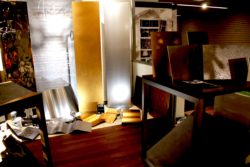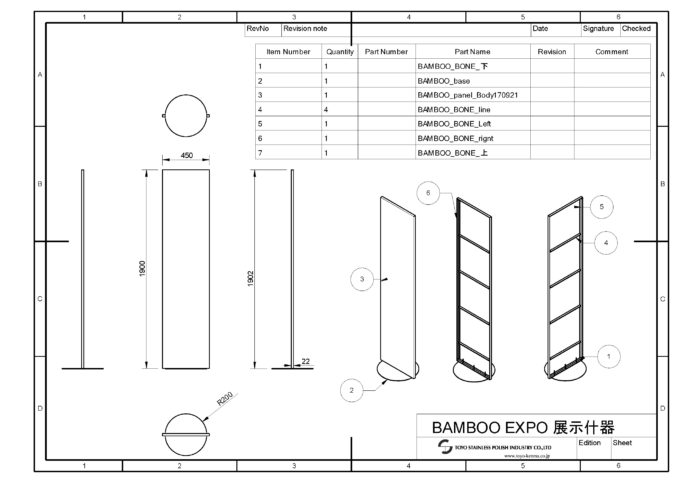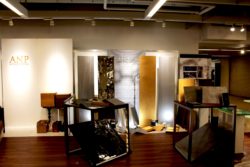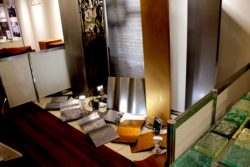Here is how to make a typical stainless steel panel.
Usually, panels are made using a thickness of 1.5 mm, but for special shapes and finishes, it is sometimes necessary to make panels from thin stainless steel such as 0.6 mm, 0.3 mm, and 1.0 mm.
Also, titanium is a very expensive material, and due to its non-strength advantage, thin materials such as 0.3mm and 0.4mm are used.
However, the problem can be solved by simply reinforcing the back.
The following is an explanation of the production method (standard configuration).
First, here is the state of the panel.

This is a box shape.
The four sides are bent to make a panel.
The following is an explanation using the exhibit.

The gold-colored one in the center is paneled with 0.4 mm titanium material.
The left panel is made of 0.6mm stainless steel.
The right panel is made of 1.0 mm stainless steel.
The configuration is shown below.
(*Since this is our design, there may be other companies with different design concepts. Please refer to the following as a typical example.

(1) The metal material on the surface is bent on four sides.
(2) 1.0 mm stainless steel is attached to the back as a reinforcement.
(*The 1.0 mm stainless steel material bent on four sides is not attached.
(3) Reinforcing bones are placed around it.
(*In this case, 3.0mm x 20mm angles are used.
(*In this case, 3.0mm x 20mm angles are used.) 4) Reinforcing horizontal supports are placed in the center at a pitch of about 500mm.
(*In this case, we used 3.0mm x20mm angles.
Reference: 3M japan’s Metal Bonder introduction video→Click!!
In this way, stainless steel and titanium panels can stand on their own, and can be applied to walls (interior and exterior).


What do you think? This is an introduction to metal panels using the adhesive method.
Thank you for your cooperation.
